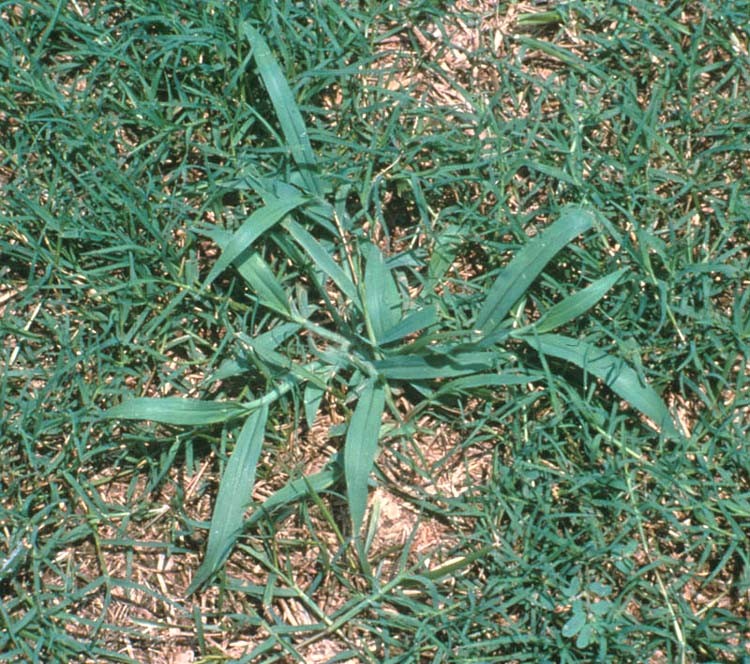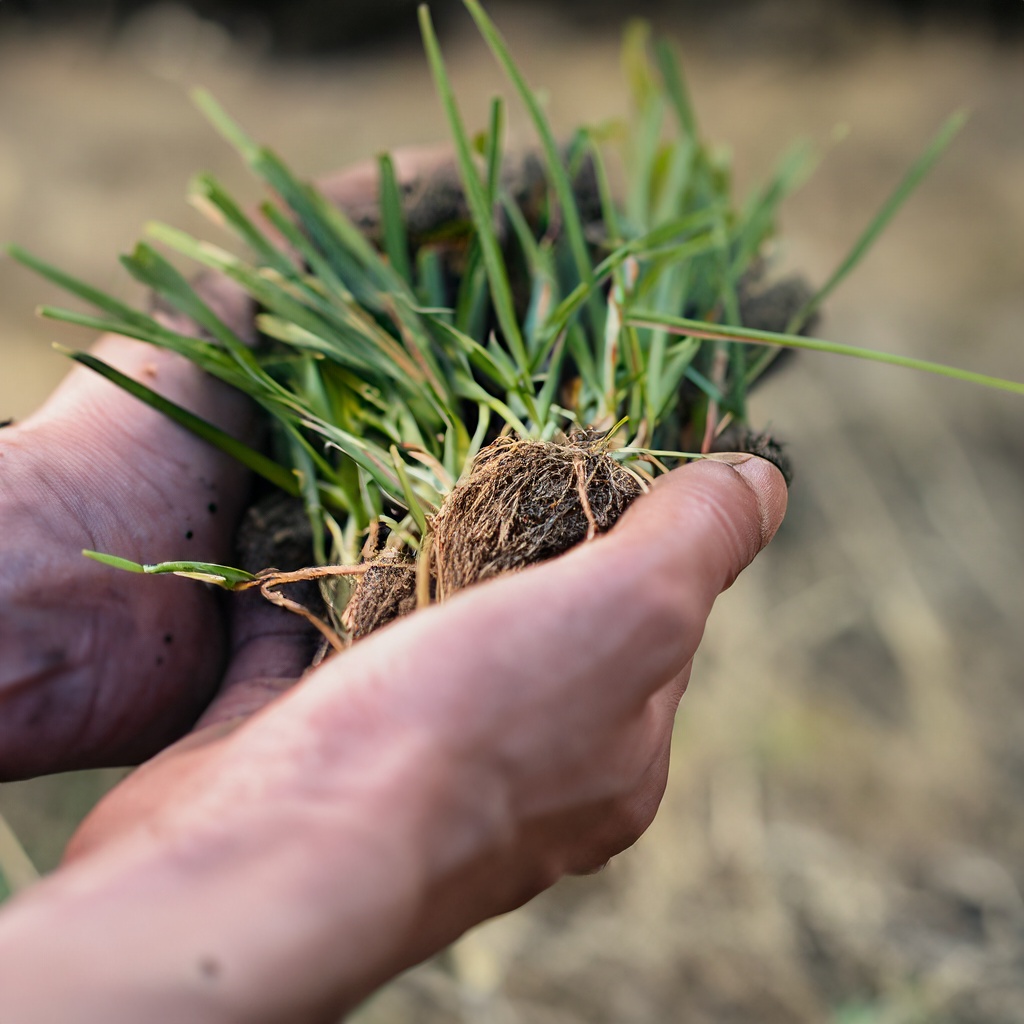What is Crabgrass?
What is Crabgrass? At its core, crabgrass is a stubborn, hearty type of weed that poses a ragged threat to any well-manicured lawn or turf field. Defined by its distinctive characteristics and tenacious growth habits, this pesky intruder often competes fiercely with cultivated grass throughout the United States
Botanically, crabgrass belongs to the Digitaria genus, encompassing over 300 different species worldwide. Its name ‘Digitaria’ was derived from the Latin ‘digitus,’ signifying a finger, and alludes to its characteristic sprawling, finger-like stems. Notable for its wide, flat leaves, and expansive, flat growth, crabgrass is often likened to a mini bush, spreading out in a prostrate manner from a central root, and hence its notorious nicknames like ‘summer grass’ and ‘watergrass.’ While its texture is rough and color a bit paler, its actual shade can vary greatly depending on environmental conditions.
The Crabgrass Life Cycle
Crabgrass follows an annual lifecycle, meaning it grows, reproduces, and dies all within a single year. Its seeds start to germinate when the soil temperature reaches approximately 55 to 60 degrees Fahrenheit for five consecutive days and nights. Given the mild climate sustained in Georgia and the contiguous southeastern US, this is usually in early spring. Despite its annual lifespan, one crabgrass plant is highly productive and can produce up to 150,000 seeds during its one-year life, explaining the exacerbating proliferation of this robust weed.
History of Crabgrass
The historical context and distribution of crabgrass are relatively broad-based. Primarily emerging from the temperate and tropical regions of the Old World, crabgrass quickly adapted to a wide range of climates worldwide, from arid to humid, warm to cool territories. Somewhere down the line, irresponsible human activities allowed the spread of this species into areas where they weren’t initially present. This is probably why crabgrass is sometimes innocuously referred to as ‘foxtail,’ a euphemism barely sufficient to veil the invasiveness of this weed.
Different species of crabgrass originated from different regions. While smooth crabgrass (Digitaria ischaemum) is believed to have European origins, large or hairy crabgrass (Digitaria sanguinalis) probably came from Africa. Today, however, the spread of crabgrass is global, thanks to the commercial activities that inadvertently helped its seeds cross the geographical demarcations.
Crabgrass in the Southeast
In the United States, no region is entirely immune to the crabgrass invasion. However, its impact is more pronounced in certain regions. Southeastern states like Georgia are more susceptible due to their higher average annual temperatures and ample rainfall, which provide the ideal conditions for crabgrass to thrive. In our Atlanta-based homesteads, for instance, this weed is typically noticed from late spring through fall, taking advantage of the warm temperatures and the regular rainfall throughout these seasons.
If you’d like to dig deeper into understanding crabgrass, we recommend taking a peek at this article on crabgrass from the University of Georgia. It’s a treasure-trove of information starting from the very basics to the steps towards prevention and eradication, specifically in hayfields, but the information is still useful for residential lawn owners. While prevention is always better than cure, you may already be battling an established crabgrass invasion. So while you scout for the best methods to control its spread, keep in mind some common mistakes like overwatering your lawn that can not only favor crabgrass but also potentially harm your desired turfgrass.

Problems Associated with Crabgrass
A significant effect of crabgrass on lawns and gardens is its competitive nature. It thrives in hot and dry conditions, making the summer season prime-time for a crabgrass invasion. The issue with this weed isn’t merely its robust growth during summer; it’s that it competes fiercely with desirable plants. Crabgrass sprouts earlier and grows faster than most lawn grasses. It absorbs nutrients and moisture that would otherwise be used by your desirable plants.
Crabgrass Looks Bad
When it comes to aesthetic concerns, crabgrass stands out like a sore thumb. Crabgrass sprouts in unattractive clumps with a coarse texture and lighter color. Its irregular growth pattern can mar the uniform appearance of your lawn. What’s more, it tends to grow in patches which, if not promptly addressed, can lead to patches and undermine the overall look and quality of your lawn.
Crabgrass Can Negatively Impact The Environment
Beyond its aesthetic implications, crabgrass also impacts the environment. It constitutes a potential threat to native species as it spreads quickly and overtakes natural habitats. Because it adapts readily to different soil types and climates, it often competes for resources with native vegetation. This could upset the biodiversity of an area and alter the local ecosystem.
Crabgrass and Soil Erosion
Crabgrass also has a soil erosion potential. Although it may seem paradoxical as grass generally prevents erosion, the annual life cycle of crabgrass is the problem. In fall, crabgrass dies back, leaving bare patches of dirt that are vulnerable to erosion during heavy rainfall or winds. This could lead to loss of fertile topsoil and degradation of the land over time.
The Increased Cost of Crabgrass
These ramifications extend to the economic domain. Apart from the cost associated with routine lawn care such as mowing and watering, crabgrass infestation commands additional expenditure for its control and eradication. This involves the cost of herbicides, professional lawn management services, and, in severe instances, re-sodding the entire lawn. Furthermore, it’s not just homeowners that take a financial hit; crabgrass infestations pose a significant challenge to farmers. This nuisance weed can excessively impact crop yields by competing with crops for resources, leading to substantial economic losses.
The good news is that with knowledge and the right approach, along with some advice based on decades of experience, controlling crabgrass and maintaining a thriving, beautiful lawn is indeed possible. For additional info from the University of Massachusetts about crabgrass biology and management, check out this fact sheet from their Turf Program. As stressful as a crabgrass infestation can be, there are ways to repair your lawn and have it looking better than ever before.
Control and Management of Crabgrass
Crabgrass, like other invasive species, can be a major concern for homeowners. It not only looks unsightly, but can also be challenging to control once it has established itself in your lawn. As with other types of weeds, prevention is key. Understanding its lifecycle and implementing strategic prevention techniques can help keep your yard free of this pesky weed.
Proper Lawn Care Practices
One of the best strategies for preventing crabgrass is to maintain a healthy lawn. Ensure that your turf is dense and vigorous, as this provides an unfavorable environment for weeds to sprout. Be attentive to proper mowing, watering, and fertilization techniques. Crabgrass seeds need plenty of sunlight to germinate, so keeping your grass at a proper height (usually about two to three inches) can prevent them from sprouting. Additionally, water your lawn deeply but less frequently to encourage roots to grow deeper into the soil, providing further resistance to weed invasions.
Use of Pre-emergent Herbicides
Pre-emergent herbicides inhibit weed seeds from germinating and are a viable option for crabgrass control. Apply the pre-emergent herbicide in early spring before the soil temperature reaches 55 to 60 degrees Fahrenheit, which is when crabgrass seeds begin to germinate.
Physical Control Methods
Hand Pulling
For smaller infestations, hand pulling can be a simple and effective method of control. This technique is most effective when the soil is moist and the entire plant, including the root, can be removed.
Mowing Practices
When mowing, it is crucial to leave your grass at a height that shades the soil to deter germination. If crabgrass manages to grow, make sure to bag and dispose of the clippings to prevent seeds from spreading.
Chemical Control Methods
Post-emergent Herbicides
Post-emergent herbicides are applied after the weed has sprouted. They are useful for fighting established crabgrass plants. However, they need to be applied with care and in adherence to label instructions to protect turfgrass and the environment.
Safe Usage Guidelines
Always adhere to the manufacturer’s recommendations when using chemical controls. Remember that certain herbicides can harm desirable plants and pose risks to humans and wildlife when misused. This includes wearing proper protective equipment, applying the appropriate amount, and practicing responsible disposal.
Biological Control Methods
Beneficial Insects or Microorganisms
Some beneficial insects and microorganisms feed on or inhibit the growth of crabgrass. Introducing these biological agents can help reduce the crabgrass population without the need for harsh chemicals, creating a more eco-friendly control method.
Potential for Integrating Control Methods
For complete and continuous control, it might be necessary to combine various methods. This could include using pre-emergent herbicides as a preventative measure, hand pulling for minor infestations, using post-emergent herbicides for significant growth, and introducing biological control agents as a last resort.
Remember, effective weed management requires a comprehensive understanding and approach. For more on how to control weeds including crabgrass and mroe, check out our additional informational resources located in our blog! Legacy Turf Farms is here to help you keep the lawn of your dreams.
